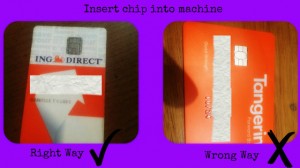We’re delighted to run the first of what we hope will be many contributions from the popular Boomer & Echo blog. The topic is something I suspect many investors can relate to if they have an intellectual understanding of the powerful reason for indexing but are unable to fully commit to it because of the behavioural biases Robb Engen so eloquently describes. Robb is the “Echo” part of Boomer & Echo and you can read all about him here. The piece originally ran in September. Link to the original is below.
Special to the Financial Independence Hub
I’ve spent the last five years convincing myself – and many of you – that I’m a sophisticated do-it-yourself investor with a sound strategy that will outperform the market over the long run.
My dividend growth investment approach has indeed performed well, returning over 16% per year since 2009. But the stock market in general has also been red hot over that time. It’ll take another bear market cycle to determine whether my investment returns were skill, luck, or something in between.
In the meantime, since launching our fee-only planning business earlier this year, I’ve been recommending a couch potato investment approach to anyone who’ll listen. I truly believe that 99% of investors would be better off indexing their portfolio with three or four low cost, broadly diversified ETFs.
Related: Why investors should embrace simple solutions
So lately I’ve started to wonder, what makes my situation so special? Why stick with a strategy that I don’t even recommend to my clients?
The answer lies in a whole bunch of hidden behavioural biases that cloud my judgement – framing, recency bias, home country bias, and overconfidence.
Framing
It’s difficult to part ways with a successful investing approach. Selling a portfolio of winning stocks – my babies that I’ve nurtured through this five-year bull market – just doesn’t feel right. But if I were sitting on $100,000 in cash instead of stocks I’d have no problem starting a couch potato portfolio today.
Recency bias
As the bull market rages on and my investments continue to perform well, it gets harder and harder to recall what a bear market feels like and what I might do if my investment returns start to lag my benchmark.
Related: How are your investments performing?
This year my portfolio has trailed its benchmark by about one per cent – not huge, but enough to make me pause and reconsider my approach.
Home country bias
When I started my DIY portfolio, I bought the 10 highest yielding stocks on the TSX. While I’ve refined my stock-picking approach since then, I’ve stuck with Canadian dividend payers even though Canadian firms make up a tiny slice of the global economy.
Making matters worse, instead of keeping my Canadian dividend stocks in a TFSA or non-registered account, they’re held inside my RRSP. Not an optimal strategy when it comes to tax efficiency.
Overconfidence
It’s hard not to be overconfident when you’ve beaten your benchmark by a full 3% per year over the last five years. But even the best investors will eventually suffer periods of underperformance.
Related: 5 lessons learned about investing
Why wait for that to happen before accepting the inevitable? Indexing gives me the best chance of achieving my investment goals over the very long term.
No shame in becoming an indexer
Norm Rothery had a great piece in the Globe and Mail in mid-September about a DIY investor whose U.S. stock picks had under-performed the market by a good 3% per year since 2007. The investor decided to stop picking U.S. stocks and move to index funds instead – opting for Vanguard’s FTSE All-World ex Canada ETF (VXC) to get his U.S. exposure.
Rothery goes on to write:
Scott’s decision to stop picking U.S. stocks is an uncommon one. Most self-directed investors remain far too confident in their abilities for far too long. Instead, disappointing long-term results are often attributed to misfortune or peculiar circumstances rather than the lack of a competitive edge.
There is no shame in admitting that you’re not the next Warren Buffett. The vast majority of investors aren’t. Those who figure it out are likely to improve their returns dramatically by following simple low-cost mechanical methods such as investing in low-fee index funds.”
Speaking of Buffett, the ‘Oracle of Omaha’ has famously touted the benefits of a low cost, broadly diversified investment approach, saying that most investors would be better off in an index fund rather than trying to beat the market by picking stocks or actively managed mutual funds.
Final thoughts
The more I read about, write about, and teach others about investing, the more I’m convinced that passive investing is the right approach.
It’s not that I stopped believing in a dividend growth strategy – it’s a fine approach that many investors will have success with – but it’s not ideal for my RRSP. And frankly, the time and effort needed to manage it properly may not be worth it in the long run.
I suspect it’s only a matter of time before I pull the trigger and become a full-fledged indexer.
Robb Engen is a fee-only planner and personal finance blogger at Boomer & Echo. He lives in Lethbridge, Alberta with his wife and two children.
This article originally ran in September of this year. Even if you read the Hub’s version above, it’s worth clicking through to the original to read the more than 60 comments appended to it.






![Objective 283_thumb[1]](https://findependencehub.com/wp-content/uploads/2014/12/Objective-283_thumb1.png)
